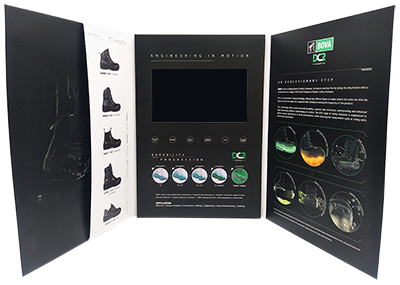In the age of rapid technological advancements, the way we communicate has evolved significantly. One innovation that has gained significant attention in recent years is the use of video boxes. These tools, which combine video content and interactive features, are transforming communication in multiple sectors, from education to marketing. But why are video boxes becoming an essential part of modern communication?

Video boxes are essentially embedded video players that allow users to view, interact with, and sometimes even create content. They are used in a variety of platforms, such as websites, social media channels, and e-commerce platforms. These interactive elements often include clickable links, annotations, or call-to-action buttons that make them more than just a passive viewing experience. Instead, video boxes enable viewers to engage with the content in real-time, enhancing the overall experience.
One of the primary reasons video boxes are gaining popularity is their ability to increase engagement. In traditional forms of media like text or static images, the audience passively consumes the information. However, video boxes provide an interactive experience, encouraging the viewer to take specific actions such as signing up for a newsletter, purchasing a product, or watching related videos. The more interactive a piece of content is, the higher the likelihood of it capturing and maintaining the audience’s attention.
Moreover, video boxes are incredibly versatile, making them an attractive option for various industries. In the realm of e-commerce, for instance, video boxes can showcase product demonstrations or provide tutorials that explain the features of a product. This leads to higher customer satisfaction and better-informed purchasing decisions. By seeing the product in action, customers are more likely to trust the brand and make a purchase.
In education, video boxes are being used to create immersive learning experiences. Teachers and trainers can integrate videos with quizzes, discussion points, and additional resources, all within one interactive box. This not only makes learning more engaging but also allows learners to control their pace and access supplementary materials when needed.
Marketing is another area where video boxes are proving to be a valuable tool. Companies are increasingly using video boxes to promote new products, showcase services, or create promotional offers. These boxes can be easily embedded in email campaigns or shared on social media platforms, allowing brands to directly reach their audience with compelling, visual content. The ability to track clicks and interactions gives marketers valuable insights into their audience’s behavior, helping them refine their strategies and increase conversion rates.
Additionally, video boxes allow for personalization, an essential feature in today’s marketing landscape. Brands can customize videos to target specific audience segments based on their preferences, behavior, or demographic information. For example, a video promoting a new product can be tailored to highlight features that are most relevant to a particular customer segment, ensuring a more impactful message.
Finally, the integration of video boxes helps in creating a more cohesive user experience. By combining video, interactivity, and other media elements in one unified tool, users enjoy a smoother, more engaging experience. The adaptability of video boxes across platforms—whether on websites, mobile apps, or social media—ensures that businesses and organizations can reach their audience wherever they are.
In conclusion, video boxes are revolutionizing the way we interact with digital content. Their ability to increase engagement, provide interactive experiences, and cater to a wide range of industries makes them an indispensable tool in modern communication. As the digital world continues to evolve, video boxes will undoubtedly remain a crucial component of how we communicate, learn, shop, and engage with content.

